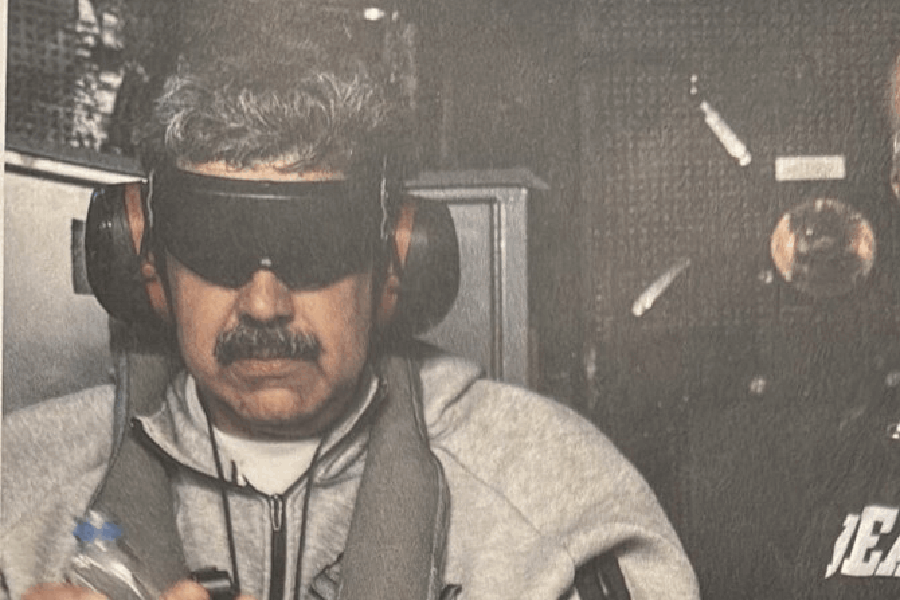There is a growing circle of artists who are inventing a new visual language to depict love and intimacy, especially within the LGBTQIA+ community. Hannah Roemer, T.M. Davy and Boris Torres, among others, use ambiguity to conjure up spaces full of fluidity and indeterminacy. Bhasha Chakrabarti is the latest entrant in this league if her show, Skin to Skin (on view at Experimenter, Ballygunge Place till March 25), is anything to go by.
At first glance, the gallery appears to have been taken over by a tangle of limbs in various stages of satiation: some are in the throes of passion, some lie entwined in post-climactic languor, others still are interlaced in a moment of intimacy that is more powerful than any sexual act — there are no faces to be found here. A shaky camera effect permeates her works. In other words, a viewer encountering the paintings might at first see just the skin of the subjects. Yet closer, repeated glimpses provide insight into how the painting was made, stroke by stroke, by a single artist in the studio. Such careful looking ultimately exposes a dynamic, creative consciousness at work.
Skin and environment — Experimenter has painted its usually white walls in solid jewel tones to offset the flesh tones of the paintings — play off each other as the pictures come into focus. Deep blues and purple shadows seep through and serve to darken or highlight the torsos. Every patch of skin is an opportunity for Chakrabarti to apply radiant brushstrokes with an electrifying intensity. They are made textural not only by the layers of thick, glistening paint but also the weft of the canvas. Her usage of light in her works defies the laws of physics — multiple sources of illumination distort realism and draw the eye to aspects and musculature that rouse the artist’s passion.
The round and oval framing of some of the paintings act like voyeuristic rear windows that give us a peak into the lives of those who have been forced to hide and confine their love owing to societal pressure. The most poignant of all the frames, perhaps, was a tiny one, dwarfed by the huge canvases around it, where the fingers of a palm are interlocked with the fingers of a foot. That is all the viewer can see; yet it conveys a strong sense of solidarity, closeness, camaraderie and friendship. Amidst all this tangle of flesh were three animal skins, stretched out in frames and burnished, giving us a multi-sided glimpse into the texture of skin.
The curatorial note by Shaunak Mahbubani reveals that Chakrabarti draws inspiration from the French philosopher, Maurice Merleau-Ponty, and his idea of ‘ontology of the flesh’. Indeed, like Merleau-Ponty, the artist emphasises the body as the primary site of knowing the world — as opposed to the long philosophical tradition of placing consciousness as the source of knowledge. In Chakrabarti’s vision, the body and all that it perceives first cannot be disentangled from each other.
Through this collection of works — they are deeply auto-narrative according to Mahbubani — Chakrabarti not only expands the lexicon of queer representation but also delves into the politics of touch vis-à-vis the refusal to touch. She questions both the castebased principles of purity-pollution in India and the segregation of black communities in the United States of America and proposes that love can erase these boundaries.
The exhibition ends with a dressedup bed facing a mirror, inviting viewers to conjure up scenes of their own.











